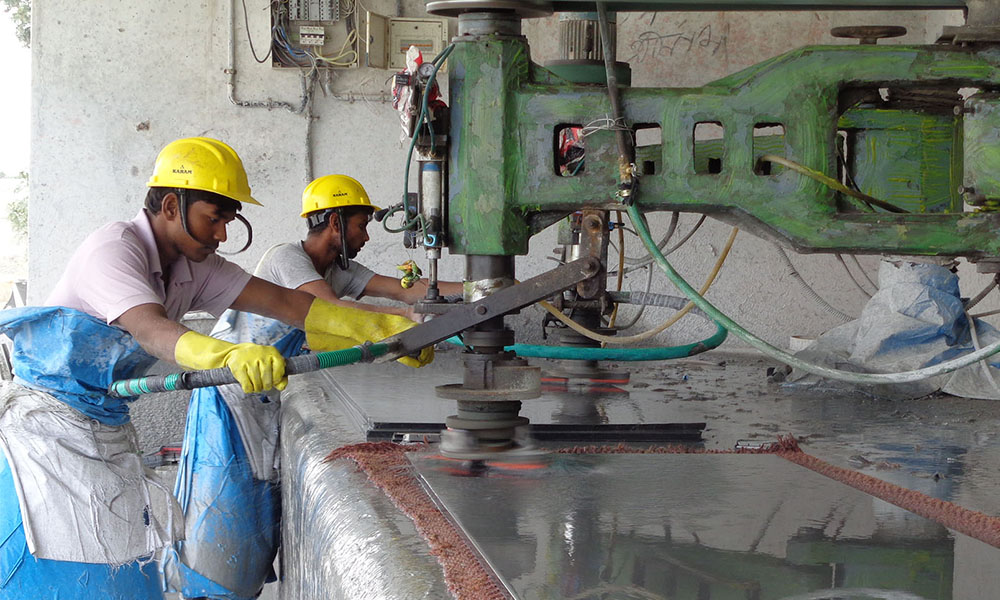Blog
The Granite Processing Life Cycle
Being one of the world’s toughest materials, granite has been used in construction for hundreds of years. Not only it is used for flooring and granite countertops, but it is also used to prepare gym walls and curling balls. Granite is one of the most commonly found igneous rocks, converting a large portion of continental crust. It is an intrusive igneous rock that is scattered at a depth of around 50 km below the earth’s surface.
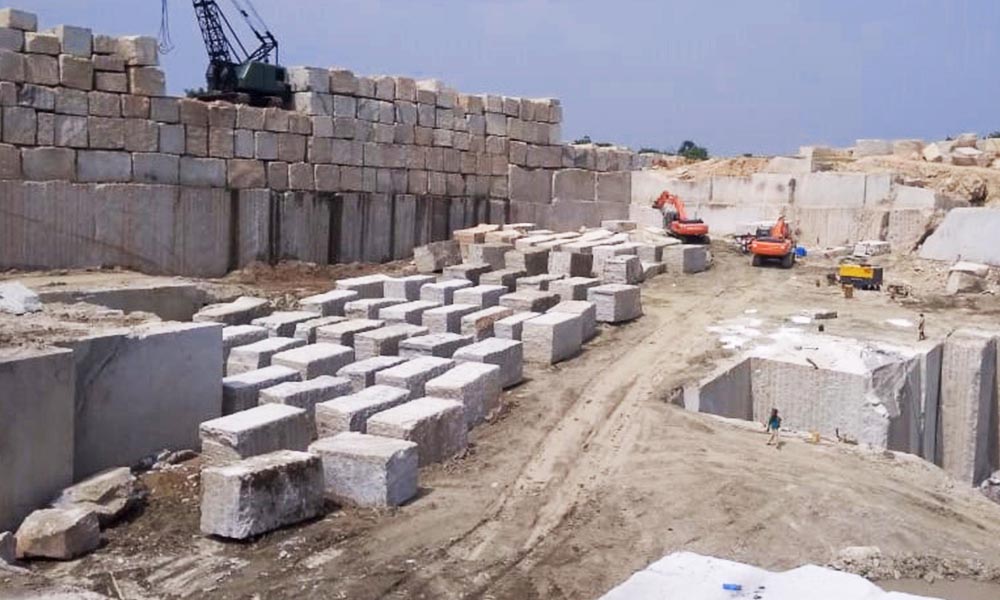
Granite takes shape from the meltdown of magma (molten material) that flows and hardens beneath the earth’s surface. During extraction, granite rocks are eliminated, exposing the granite stone. Granite stone typically boasts a coarse texture as the magma cools down slowly below the earth’s crust, enabling superior growth of crystals.
Granites are most feasibly characterized as light-hued and coarse-grained as an outcome of cooling slowly below the surface. Color variation is a reaction to the proportion of each mineral discovered in the sample.
The crystals present in granite enable a wide range of diverse colors. For example, feldspar denotes pink or red color, mica is attributed to dark brown or black hue, whereas the presence of quartz leads to pink, white, or black color.
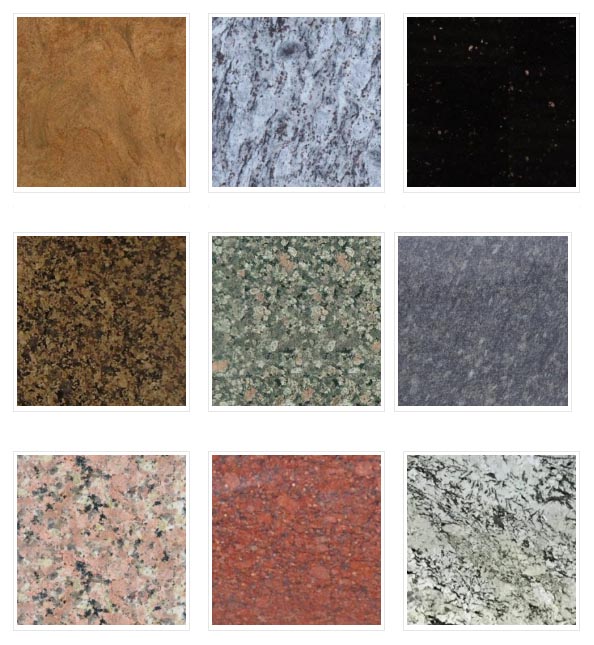
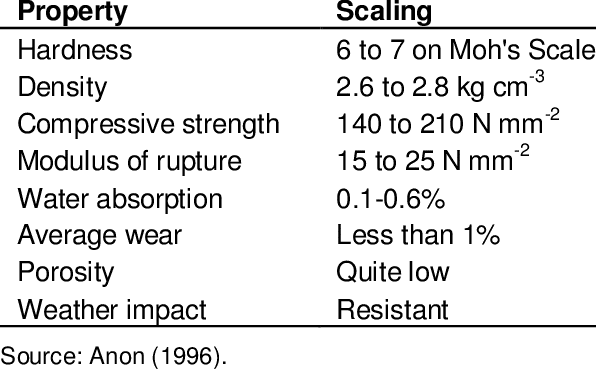
Granite Extraction and Block Assortment
Here the term Extraction refers to the removal of stock blocks from a recognized and uncovered geological deposit. There are different types of quarrying methods used to extract the large size blocks of granite basis the quarry location, depth, density, and fracturing/bedding planes.
The first stage in quarrying is to get access to the granite deposit. The deposit is located by eliminating the layer of earth, flora, and rock inappropriate for other processes using heavy equipment and carrying them to onsite storage for possible use in the later recovery of the deposit site. Once the face of the granite is revealed, the stone is removed from the quarry in pews, whose measurement range from 8 to 12 feet square going up to 20 feet or more. Most granite suppliers resort to a number of techniques appropriate from the geology perspective.
The quarry process is inclusive of activities like drilling the holes along the edges of the granite bench, cutting the stone in the despite using diamond-wire saws, and dividing the stone using hydraulic machinery. After the bench is detached from the main deposit, hydraulic cranes are used to take out the granite bench from the deposit. The bench is then transported to a different area for size and quality checks.
Both hand-held and machine-based inspections are carried out to check the appropriateness of the granite blocks for further processing. In most cases, granite quality inspection specialists visit the quarry to inspect the blocks that are slated or processed. These inspectors check the blocks for color variations, fissures, cracks, spots, hairline fractures, and other defects before moving them for the next level of treatment.
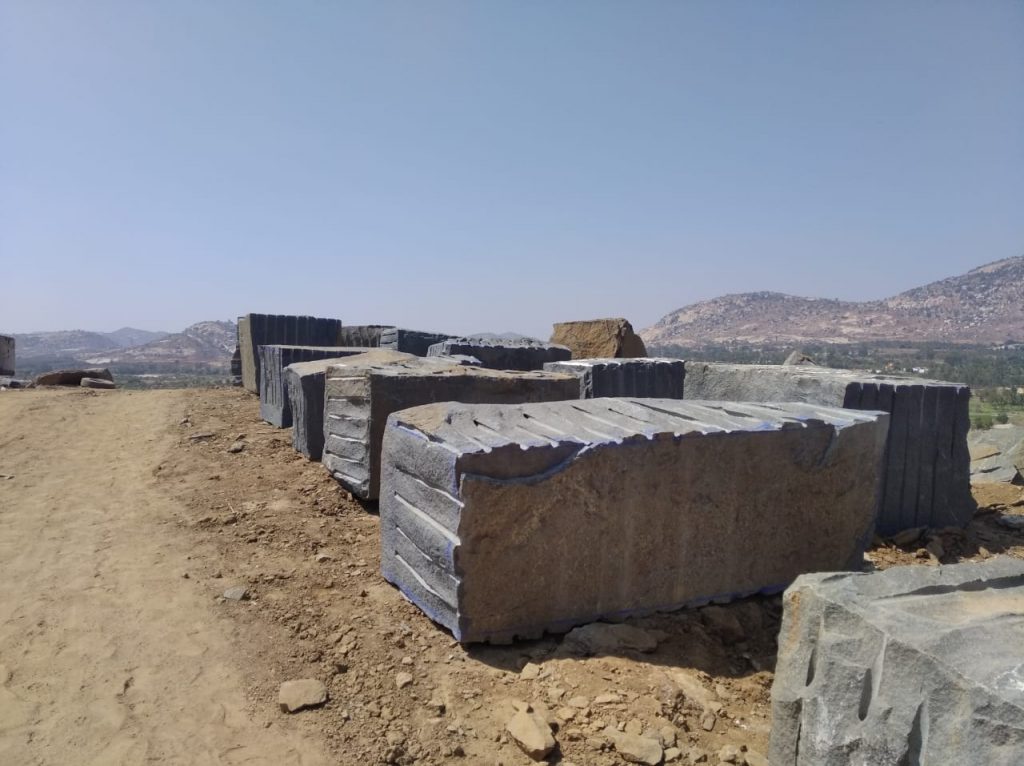
Cutting of Granite
In terms of granite processing, the first step is the cutting of granite blocks. This is primarily done by using diamond wire-saw machinery. A continuous stream of water is maintained over the saw to dissipate the heat produced during the cutting.
Gangsaw
After the block has been treated under a wire-saw machine, matting becomes necessary to eliminate the chance of any cracks during the cutting procedure. Given the hardness of the stone, the blades are adjusted so as to get slabs of desired thickness.
The platform holding the granite block is then shifted into the gang-saw. A combination of water, grit, and lime, also called the slurry is used during the cutting of the block which mainly helps in dissipating the heat generated during the cutting process. The viscidness of the slurry is fervently examined and accustomed for every object and also during the cutting procedure.
At regular intervals, both the machine and the block is inspected and adjusted. This is done to ensure a straight and finer cut of the granite blocks. Once the cutting is done, the processed slabs are checked for any defects and marked separately for inventory management, and shifted further for next-level treatment.
Cutter
The next stage of granite processing involves the use of a cutter machine. There are different types of cutter machines from single blades to up to 10 blades that are used to process the granite stone. The process is done under the strict supervision of stone specialists who check the quality of granite slabs after they are extracted from the machine.
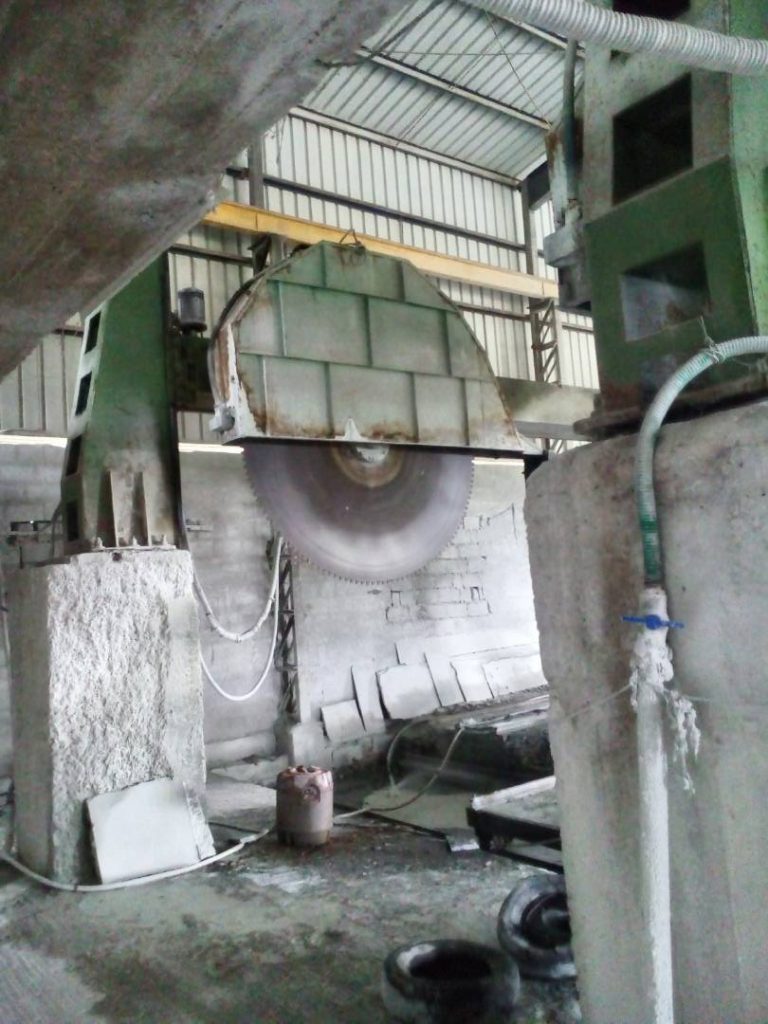
Grinding
After the granite slabs are cut, grinding is done. In other words, it refers to the smoothening of granite surfaces. This is done to smoother the surface which suffers some degradation during the cutting.
A special grinding machine is used to carry out this process which contains multiple heads. They are fixed to diamond abrasives of varying densities to attain a regular surface finish. The application of water is continued in this process to dissipate the heat.
Epoxy Application
An epoxy resin is applied to the slab surface to fill all the pits and small fissures occurring on the stone surface. This ensures proper aging of granite so as to make it last longer without hampering its natural aesthetics. An appropriate combination of granite color and epoxy is necessary as it paves the way for a nice-looking granite slab without any visible defects.
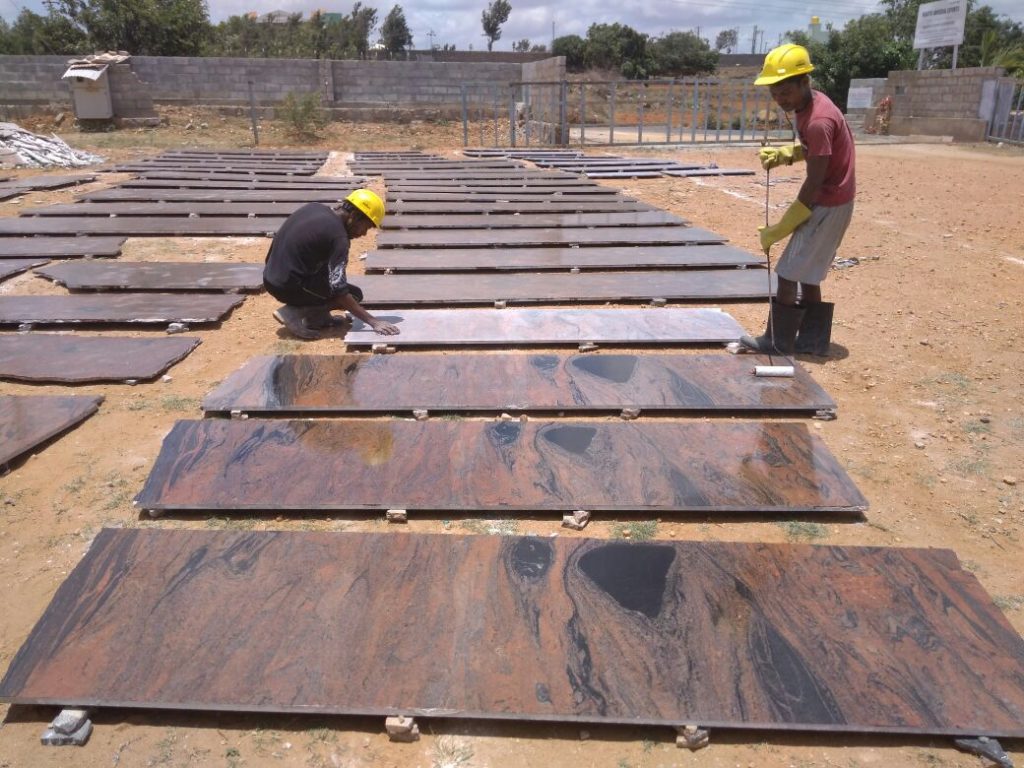
However, before the slab is treated, it is exposed to heat to enable proper and deeper absorption of epoxy resin. Moreover, the surface needs to be thoroughly cleaned so as to eliminate any dust or debris on it. Most granite suppliers and granite countertop suppliers choose from a wide range of epoxy chemicals for application.
During the process, the epoxy resin is spread evenly to allow deeper penetration of the material on the slab.
Polishing
Polishing is done to eliminate any excess resin on the granite surface as well as smoothen its finish.
The process is carried out using special silicon carbide abrasives with a polishing machine. There are different types of abrasives to choose from considering the varying hardness and pressure of the granite slab.
A granite stone goes through several processes before becoming a slab that can be applied in a construction or architecture project. India is a hub of various granite countertop suppliers that can be bought in diverse colors and finishes. The granite stone extracted from the country is exported to countries like the USA, UK, UAE, Australia, Germany, China, and others.
